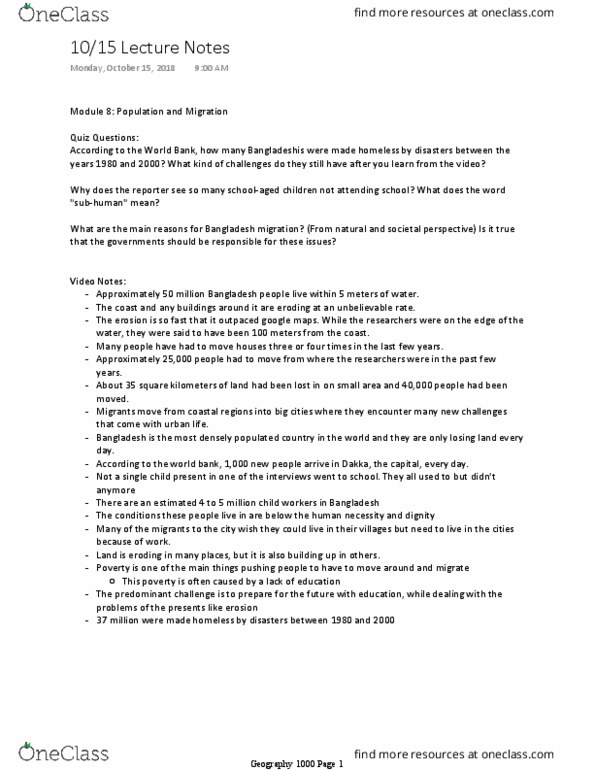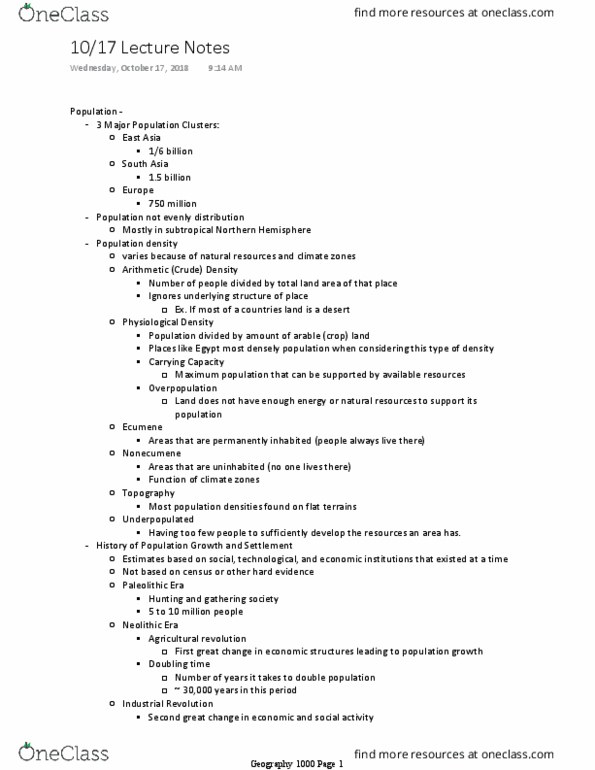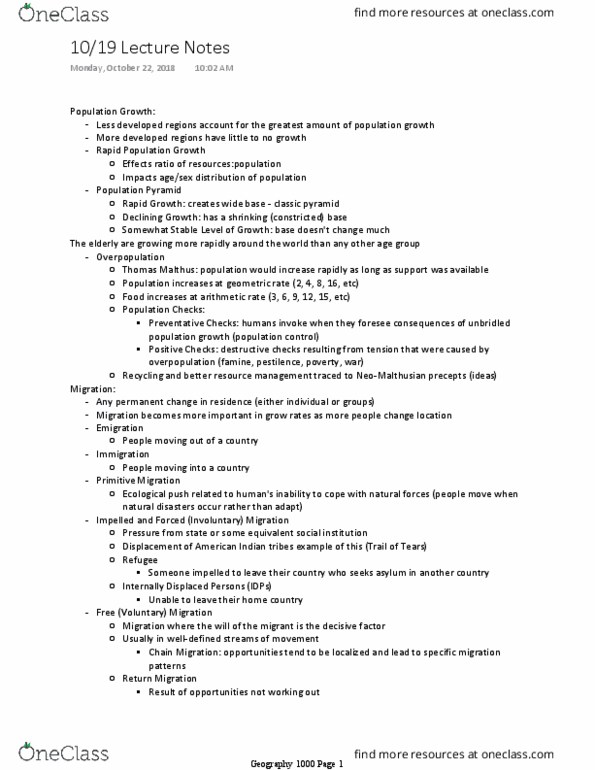GEOG 1000 Lecture Notes - Lecture 23: Paleolithic, Neolithic, Northern Hemisphere
GEOG 1000 verified notes
23/43View all
Document Summary
Europe: 1/6 billion, 1. 5 billion, 750 million. Varies because of natural resources and climate zones. Arithmetic (crude) density: number of people divided by total land area of that place. If most of a countries land is a desert. Physiological density: population divided by amount of arable (crop) land, places like egypt most densely population when considering this type of density, carrying capacity. Maximum population that can be supported by available resources: overpopulation. Land does not have enough energy or natural resources to support its population: areas that are permanently inhabited (people always live there) Underpopulated: areas that are uninhabited (no one lives there, function of climate zones, most population densities found on flat terrains, having too few people to sufficiently develop the resources an area has. Estimates based on social, technological, and economic institutions that existed at a time. Not based on census or other hard evidence. Paleolithic era: hunting and gathering society, 5 to 10 million people.




